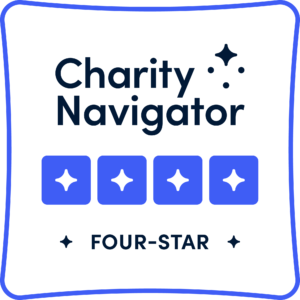Sea Cadets Frequently Asked Questions
Sea Cadets FAQ
-
How much does it cost to join Sea Cadets?Costs vary by unit, but you’ll find a breakdown of enrollment fees and other expenses on our Program Fees page.
-
How much does it cost to send my child to a Sea Cadets training?Training costs depend on the type and length of the event. Visit our Program Fees page for details on typical training expenses.
-
What is the difference between a Sea Cadets drill and a Sea Cadets training?
Your local Sea Cadets unit meets year-round, either one or two days per month, and sometimes overnight. The drill schedule varies from unit to unit. Drills consist of team-building, physical training activities, close-order military drill, and practical hands-on instruction. This may also involve special off-site activities such as tours of military bases or naval ships.
Sea Cadet trainings occur only twice a year—during summer and winter school break. Trainings, which are 1-2 week-long and take place throughout the country, offer specialized disciplines such as field operations, aviation, seamanship,, robotics and SCUBA.
-
Is it mandatory that my child participate in Sea Cadet drills?While we understand that children may be involved in a number of extracurricular activities, attendance and participation at drills are required of active Sea Cadets. Attendance requirements vary by unit. Units are required to offer 120 hours of drill per year. A cadet may miss no more than 30 hours of drill per calendar year.
-
Is it mandatory that my child participate in Sea Cadet trainings?
High-school aged cadets are required to attend at least one training per calendar year. Middle-school aged cadets can optionally attend trainings.
Trainings are the most exciting and rewarding aspect of Sea Cadets. Trainings allow cadets to grow as individuals and to explore a variety of new opportunities that will prepare them for their futures.
-
Is my child eligible to participate in Sea Cadets if they are unable to pass a physical fitness test?
We focus on the potential of each applicant, not just where they are now. Anything is possible to achieve with hard work and dedication.
Applicants must show they have the potential to pass our Physical Readiness Test (PRT). While this is not required to enroll, they must show that they are willing to pass our PRT within 3 months of enrollment and at least once every 6 months.
-
What does the Physical Readiness Test consist of?
The Sea Cadets Physical Readiness Test (PRT) consists of three activities performed in order:
- Plank
- Push-ups
- 1-Mile Run
No cadet will be eligible to participate in Navy League Orientation, Sea Cadets Recruit Training or Advanced Training unless he/she has taken and passed the PRT within the preceding six months. Level 2 or above must be attained for Recruit Training and Level 3 or above must be attained to attend Advanced Training.
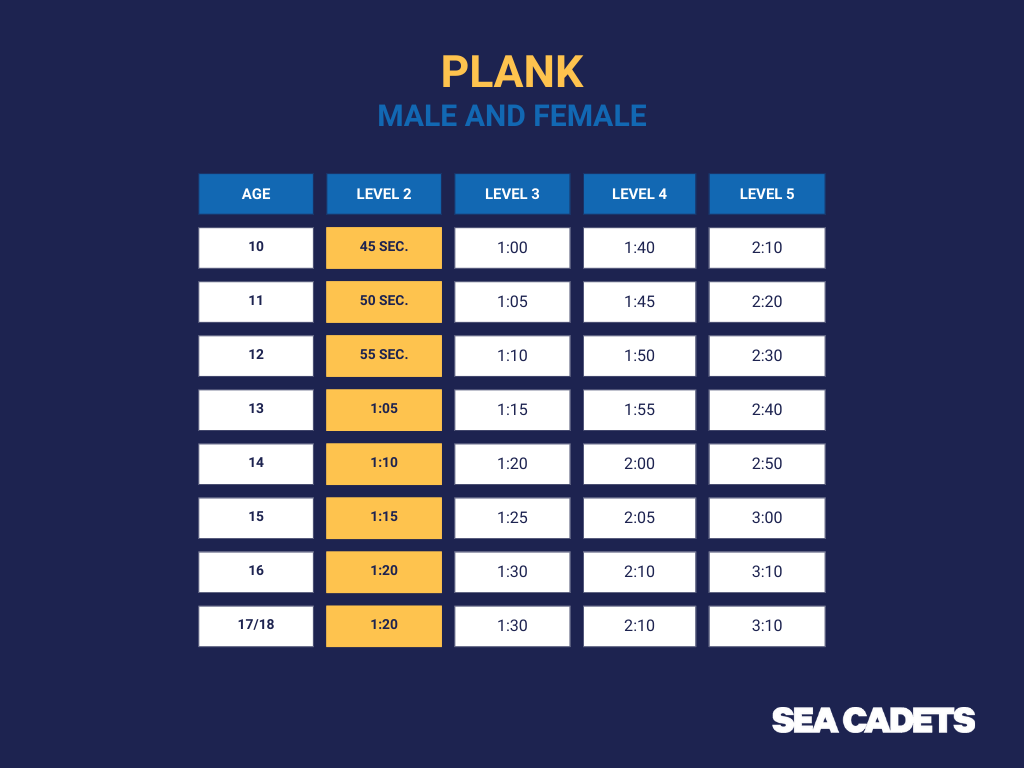
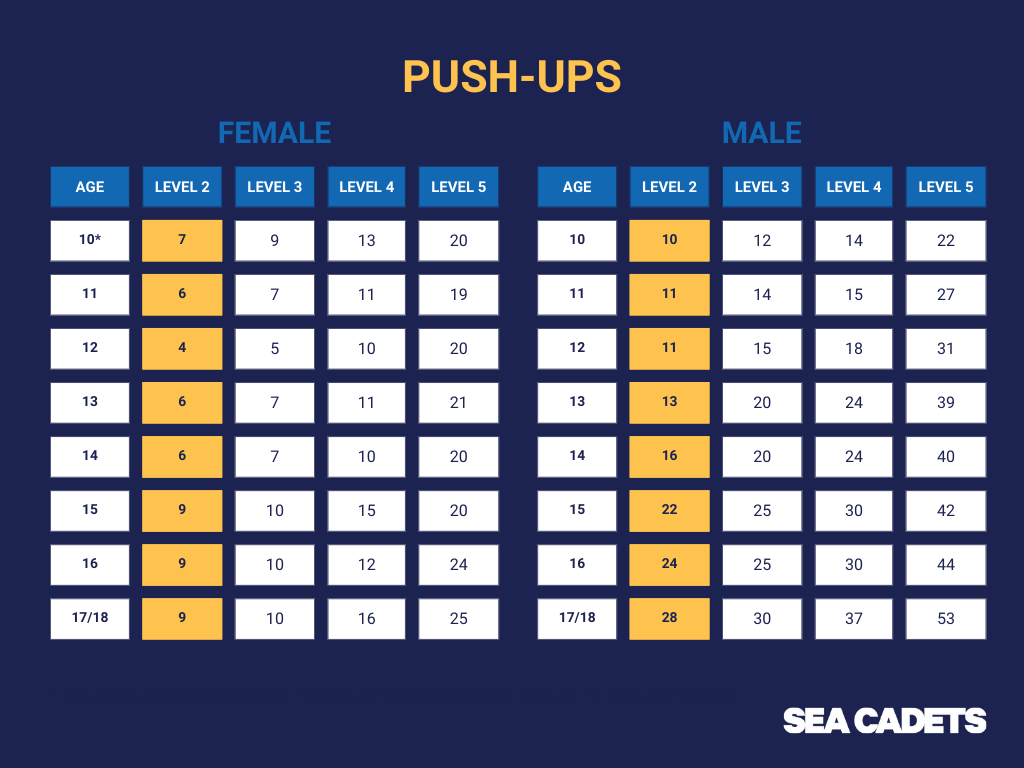
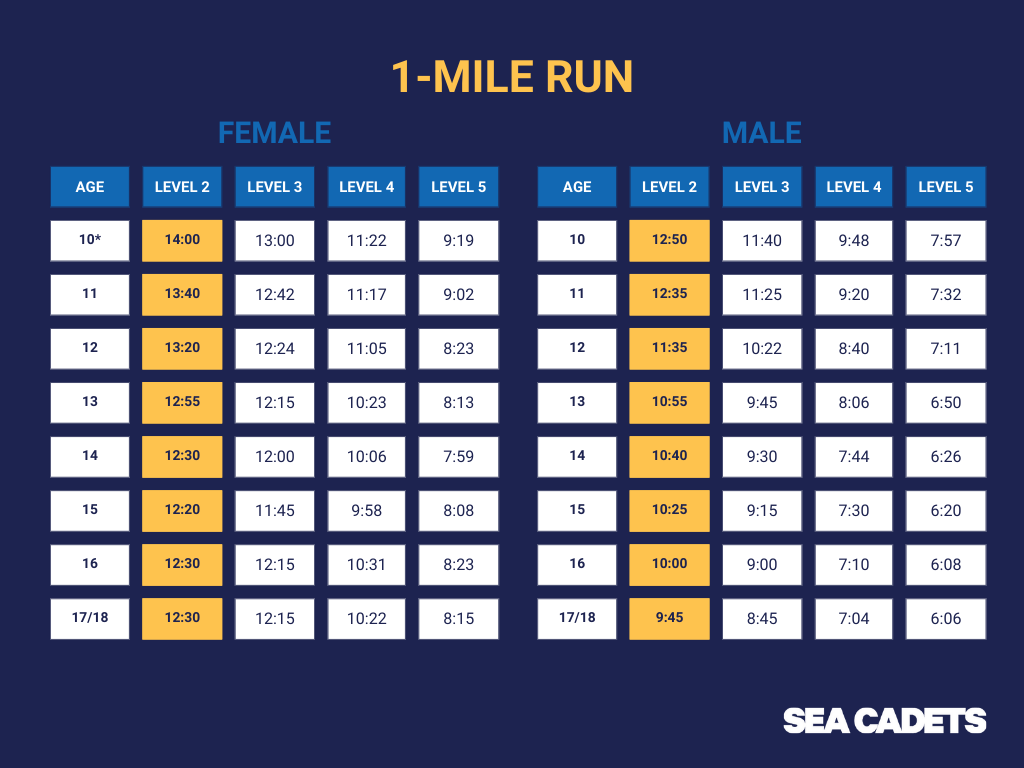
-
What are the ranks in Sea Cadets and how does a cadet rank up?
In the Sea Cadets, ranks mirror the ranks in the U.S. Navy. Our ranks range from Recruit Candidate for beginners, up through various levels such as Seaman Apprentice, Seaman, and Petty Officer, to the highest cadet rank of Chief Petty Officer.
Cadets rank up by completing specific online training modules, demonstrating proficiency in physical fitness skills, leadership qualities, and passing required exams for each rank. Time in service, participation in our youth program’s activities, and recommendations from superiors also play a crucial role in the promotion process. Our volunteers also have ranks in a similar fashion. A chart of our ranks and their insignia is below.
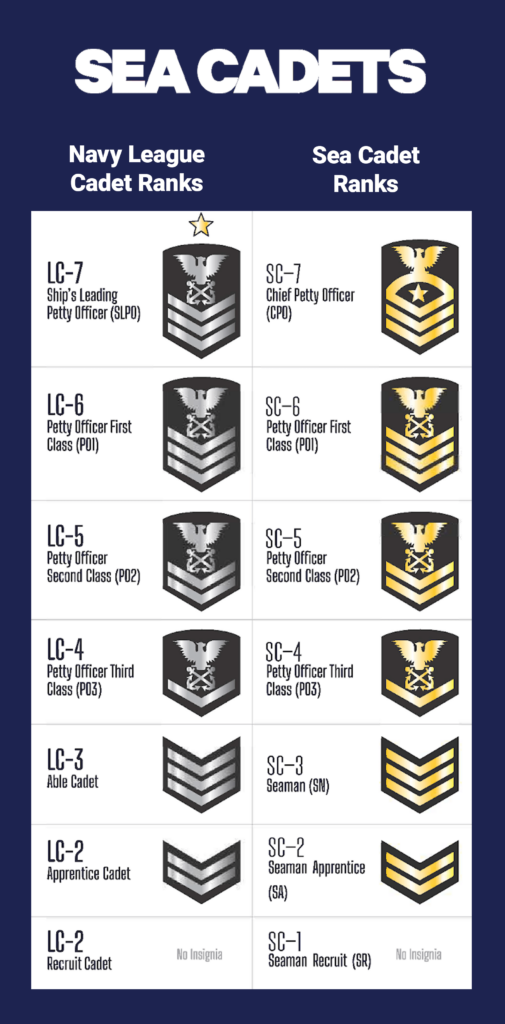

CONTACT US
www.seacadets.org
info@seacadets.org
2300 Wilson Blvd, Suite 200
Arlington, VA 22201
MISSION
The mission of the United States Naval Sea Cadet Corps is to build leaders of character by imbuing in our cadets the highest ideals of honor, respect, commitment, and service.
©2025 Naval Sea Cadet Corps, TM & ® 36 USC 154106
The U.S. Naval Sea Cadet Corps is a 501(c)(3) charitable organization, EIN 52-0808385
